[You can check out our review of the updated Elevation Training Mask 2.0 here. Or watch the battle of the masks in our Elevation Training 1.0 vs Elevation Training Mask 2.0 here]
Earlier this year I began testing the Elevation Training Mask which I detailed in my First Impression Review. That was over 6-months ago, so I thought it was time to give you my final review of the product.
Now I’ll admit, it usually does not take this long to write a final review. However, I wanted to test it for a good period of time before I gave you my final thoughts. With that in mind I have used it in various training cycles throughout the year in an attempt to present the most accurate review possible.
But first things first. What is the Elevation Training Mask and what does it claim to do?
Training Mask states on their website their mask:
Is a patent pending “Resistance Training Device” that helps condition the lungs by creating pulmonary resistance and strengthening the diaphragm.Elevation Training Mask will help you regulate your breathing, increase lung stamina, lung capacity, oxygen efficiency and increase overall mental focus. Training Mask can help your overall performance in all sports and daily living.
Essentially the Elevation Training Mask (this was the 1.0. There is now a Elevation Training Mask 2.0) is a gas mask that you place over your face that restricts the amount of oxygen you can breathe. It comes with three different nose pieces (yellow, orange and red) that you attach to the front of the mask that restricts the oxygen intake.
The yellow nose piece has three holes drilled into it, so that allows the most oxygen into the mask and is therefore the easiest of the three to use. The orange cap has two holes, while the red cap has one, making it the most difficult of the three.

Training Mask claims that due to the oxygen restriction it has the same effect as high altitude training. As they state:
“Elevation” Training Mask is great because it regulates how much air you can breath in – making it so that you breathe less oxygen – in turn, making the air thinner (due to the low oxygen intake it’s similar to altitude training). With reduced oxygen consumption the human body changes in several ways. The production of red blood cells and new capillaries (small blood cells) increases the transfer of oxygen from the lungs to the rest of the body more efficiently.”
All that sounds great and would excite any fitness and CrossFit enthusiast. However, the issue with these claims is that substantiating them requires some stringent scientific trials and at the very least laboratory blood tests. That way we could measure the oxygen levels in the mask and could see if placing the red, yellow or orange nose cap takes the oxygen from 21% down to 17%, 16%, or 15%.
Additionally we could then test if wearing the mask over “X” amount of time does in fact increase red blood cell count and if so by how much. Although considering we here at The Rx Review are not scientists, we had to take a more rudimentary approach and review the mask as a regular consumer would.
So with that in mind let’s get to the review.

The Good
Fit: One of the best things about this mask is the ease of use. The Elevation Training Mask (1.0) is a one size fits all product. Putting it on and adjusting the mask to the desired fit was as simple as pulling the 5 rubber straps tight.
That was the same for releasing the straps, meaning getting the mask on and off your face was as easy as could be. There are many people that will put this on their face for the first time and feel suffocated, so ensuring you can get the mask off quickly is a welcome relief. We also tested this mask on a variety of people with differing heights, shapes and sizes and found the mask fit all of them well.
Design: The three nose pieces that are supplied with the mask are easy to attach and detach. The mask itself is lightweight and durable so throwing it into your gym bag or taking it with you is never an issue. The thick rubber design also means this thing is virtually indestructible. The only thing that could cause some issues down the track is if one of straps break. Yet after using this extensively over the year there is literally no signs of wear or tear.
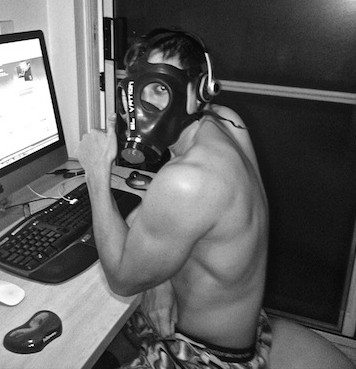 Use: The moment you put the mask on there is no question in anyone’s mind that this thing works. When I say “works,” I mean you immediately feel it is very difficult to breathe. In actuality, it is so restrictive it can be a bit of a shock to first time users.
Use: The moment you put the mask on there is no question in anyone’s mind that this thing works. When I say “works,” I mean you immediately feel it is very difficult to breathe. In actuality, it is so restrictive it can be a bit of a shock to first time users.
The first time I tested it, I naively did so with the red cap on just to see what effect it would have. I was sitting at my desk at the time and after 7-minutes I had to rip it off my face as I started freak out. The rubber mask creates such a tight seal it allows for only a small amount of oxygen to enter.
Therefore, I was required to work extremely hard to suck in the limited oxygen entering the nose cap. I was trying so hard to reach the 10-minute mark, I ended up hyperventilating and felt a little claustrophobic as if someone was holding a pillow over my face.
When I took the mask off, you feel as if your chest and lungs have been through a workout. Despite that reaction, I was actually impressed with the product and knew then it would be a great training tool to teach me how to control my breathing.
 Breathing: This is where the mask shines. As I said I cannot dismiss or substantiate if this mask does in fact increase your VO2 Max or red blood cell count.
Breathing: This is where the mask shines. As I said I cannot dismiss or substantiate if this mask does in fact increase your VO2 Max or red blood cell count.
What I can tell you is it does what few products on the market can do today. And that is force you to work on and control your breathing. After my disastrous test run the first time, it was clear to me I needed to learn how to relax my breathing. By the end of that first week of testing,
I persevered and could very comfortably wear the mask for 20-minutes while sitting. It was then I began using it on the Concept 2 Rowing Machine and for short metcons at the park. So by the time I attempted a CrossFit workout called Helen, I found I was more comfortable when I began to gas.
Although it was great for CrossFit style metcons, I really noticed the benefit of the mask when I was competing in Brazilian Jiu Jitsu. Using the mask taught me how to become comfortable when functioning on low oxygen. So unless you really cut the blood to my carotid artery, I felt I could hold on just that much longer. For that alone I thought the mask was great.

The Bad
Design: Initially I used the mask on a Concept 2 Rowing Machine and running in the park. For those exercises I never noticed any issues and it worked great. Although once I took it to my local CrossFit box, we ran into some issues. We found that there were workouts where the the mask and nose piece would simply get in the way. I personally watched several people hit the mask when they were doing kettlebell swings and some light barbell work.
I also found it was a pure nuisance when trying to do butterfly kips, standard pull-ups and rope climbs. Additionally the mask was a nightmare during box jumps. Due to the shape of the mask your vision is limited when looking down and out of the eye sockets. Time and time again, anyone that tried to jump onto 20 or 24-inch box struggled when wearing the mask.
So much so many people refused to even attempt jumping when wearing it. The few that did, (myself included) had to be very careful as there several times we missed the box entirely.

Hair: I mentioned above one of the things I liked about the mask was the fact the straps were so easy to adjust.
However, even with my short hair, I found there were times the straps would catch my hair when tightening.
When I tried to release the straps it would then rip those strands caught in the strap out. And that is exactly what happened when I gave it to several women to test.
Time and time again their long hair would get caught when trying to fix the masks to their face and was always a complaint. After I used it for awhile it did become less of an issue however it still occurs from time to time.
Attention: As much as I like the design, one of my biggest gripes is how much attention this mask draws. If you are the kind of person who likes to shock people this will be great for you but when I’m training I like to get on with it.
I find if I’m training outdoors, I get enough looks when I’m doing muscles-up or general CrossFit WODs. So running around in a gas mask means you are going to attract even more attention, that I personally did not like.
Even when I took the mask to my local CrossFit box, I found there were just too many questions and strange looks. After a while, I found all that attention a little distracting, so I began to use it less frequently. That is not necessarily Training Mask’s fault but something to note if you are planning on purchasing one.
Directions: One thing I was surprised about was the omission of a set of directions. I did receive a pamphlet called, “The Science Behind the Mask,” that told me to not to wear it while sleeping and to take if off if I felt light headed or faint, but nothing else.
I checked the Training Mask website and could not find any directions there either. So it was a little hard to know if I was using the mask in the correct manner. All I wanted to know is if I should wear the mask everyday for 5, 10 or 20-minutes. Sure everyone is different but some kind of guidelines would be helpful.

Conclusion
After using the the Elevation Training Mask (1.0) for over 6-months, I can say honestly it is useful training tool. Does it work as advertised? Well, that is a little hard to say. Without conducting oxygen and blood tests, it really is hard to know if it does increase your red blood cell count or simulate elevation training.
What I can say is the mask did help me learn how to control my breathing and for that it was great. It was easy to use and I feel it did increase my lung capacity if only a little.
Among many other sports, Training Mask has recently begun marketing their product to CrossFitters and currently retails at $85.79 on the Training Masks website.
So the big question is, should you go out and purchase one? Well, if you compete in Brazilian Jiu Jitsu or MMA, I think this is a great product and I would be happy to recommend it. But if you are CrossFitter, I say yes and no.
If you are everyday CrossFitter who simply uses CrossFit for general functional fitness, then this is really not necessary. Sure, I liked it but I did not think it was a game changer like I had hoped. Nor did it increase my fitness substantially.
However, if you are a competitor and looking for that little edge, then at this price I think it is a great training tool that you could use in your workouts that can help with your overall fitness.
Training Mask has recently come out with a new mask called the Training Mask 2.0 and without even testing it, I think this would be probably be more suitable for CrossFitters.
The smaller profile of that mask appears it may appease some of the issues I noted above with kettlebell swings, rope climbs and pull-ups and enable you the ability to to see the box when attempting box jumps. Strangely enough the 2.0 is actually cheaper than the original Training Mask currently retailing at $76.25.
[Check out our review of the updated Elevation Training Mask 2.0 here]
[wzslider transition=”‘slide'”]

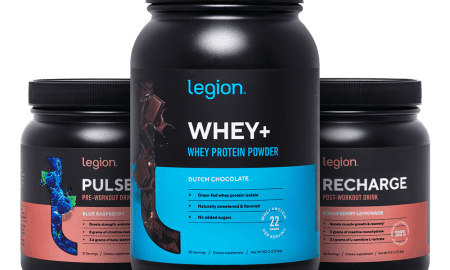

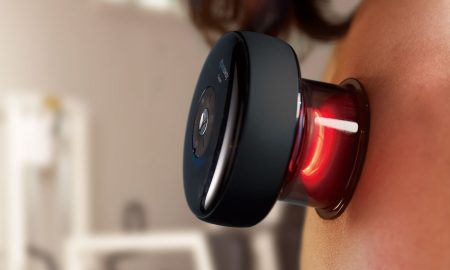
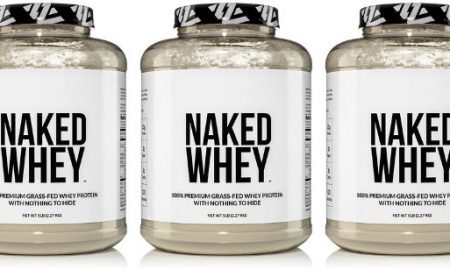
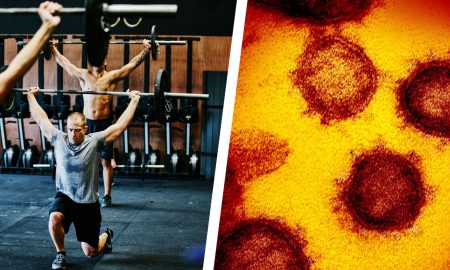
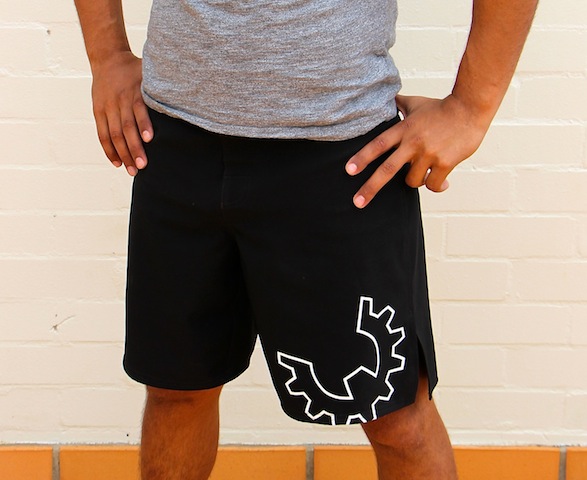


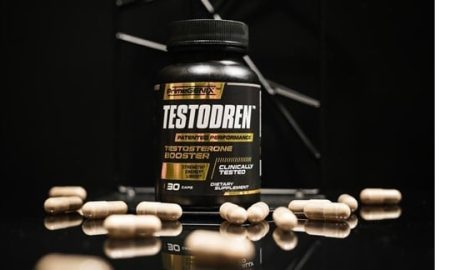
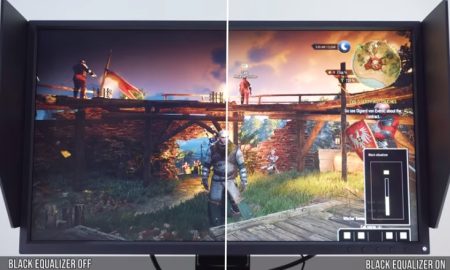


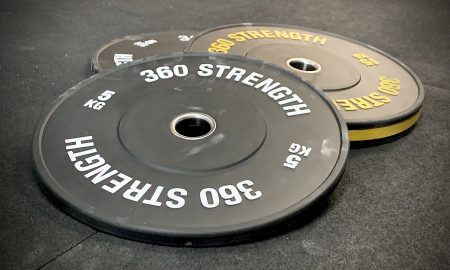
Follow Us